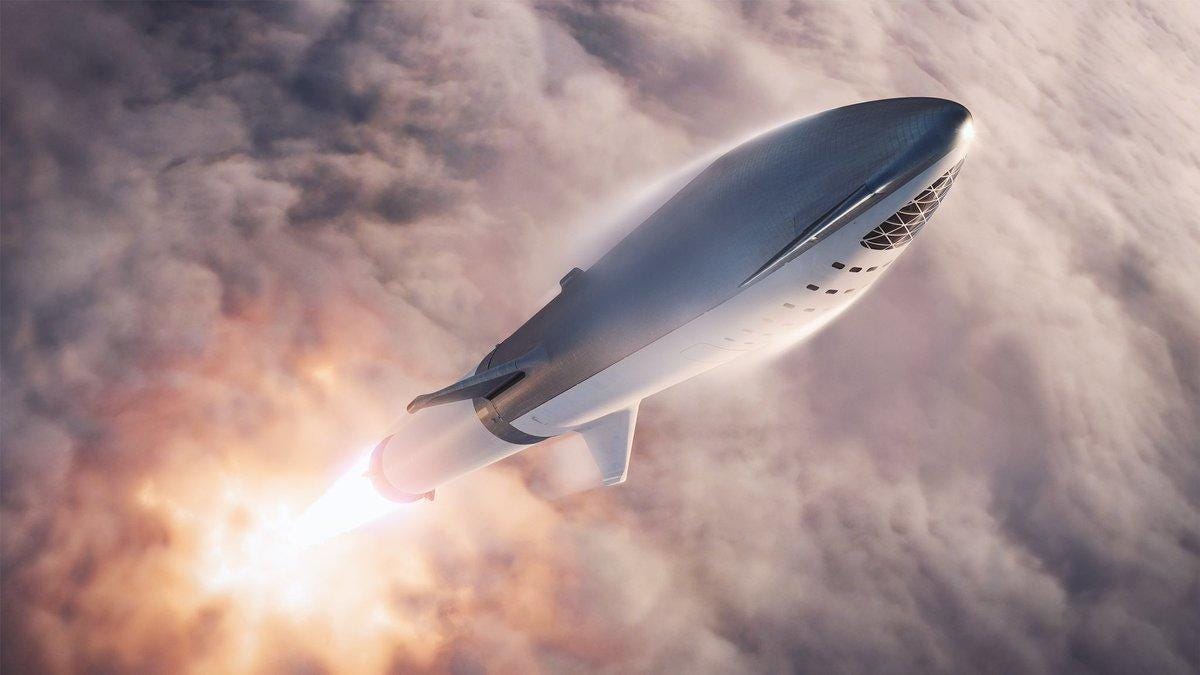Elon Musk: SpaceX starting on 'Super Heavy' rocket booster to power Mars trip
The company is charging ahead toward Mars by developing its next-generation rockets.

This dramatic render shows Starship, which was known as BFR at the time this image was released, in September 2018, blasting away from a cloudy Earth. SpaceX says the ship and rocket are designed to be fully reusable and will be able to service Earth orbit as well as the moon and Mars.
The latest prototype of Elon Musk's Starship prototype has only gotten about 500 feet (150 meters) high, but the SpaceX CEO said Monday his rocket company may start construction on a booster prototype to pair with Starship as soon as this week.
"That's gonna be pretty cool," Musk said in a keynote interview at the virtual Humans To Mars summit.
Starship is SpaceX's platform for taking humans to the moon, Mars and beyond, but to reach those deep-space destinations, the plan is to pair Starship with a powerful first-stage booster called Super Heavy. So far we've only seen early prototypes of Starship make short test flights or "hops."
Musk added that Super Heavy may have fewer engines than originally planned -- possibly 28 Raptor engines rather than 31.
"That's still a lot of engines. we'll up cranking up the thrust on those engines."
He mused that it might be possible for Raptor to eventually be able to lift 200 times its own weight.
As for when we might see a Starship prototype fly higher than just a hop, Musk said "probably next year" and aimed to reduce expectations a bit.
"The first ones might not work," he said. "This is uncharted territory. Nobody's ever made a fully reusable orbital rocket ... and then having something twice the size of a Saturn V (the rocket that astronauts to the moon) that's also fully reusable... that's really something else, that's profound. That's the gateway to the galaxy or at least the solar system."

